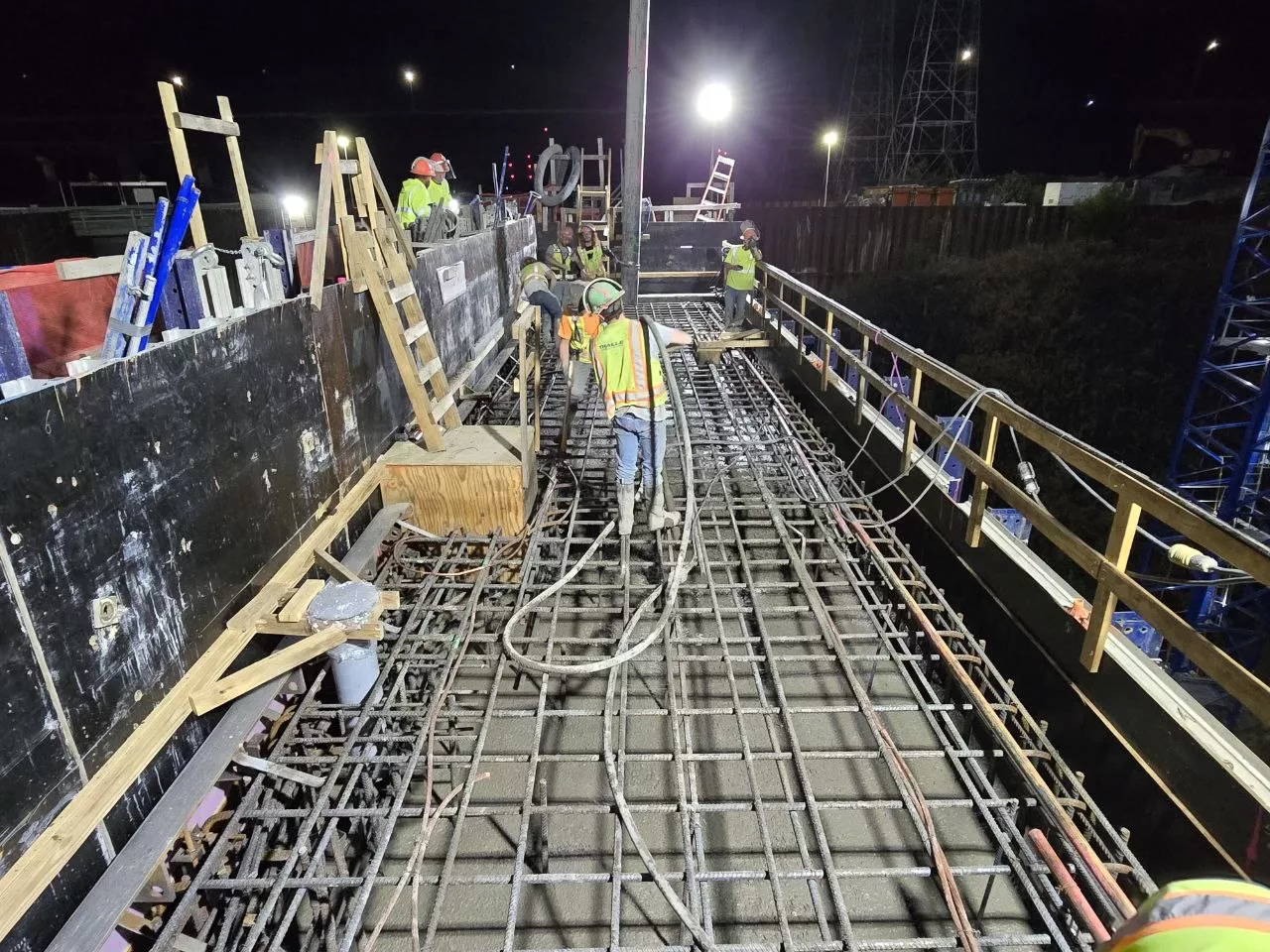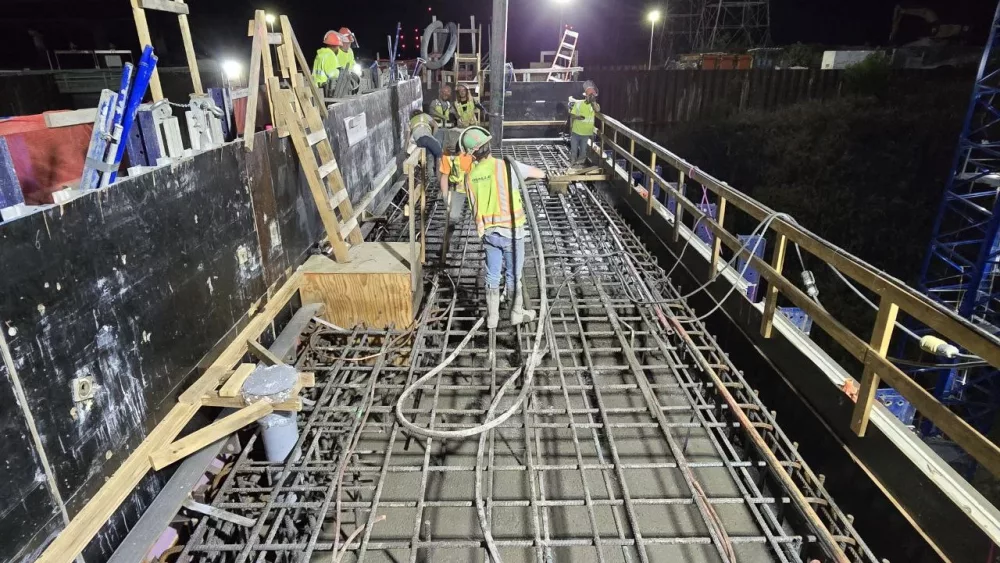
Construction workers from contractor Thalle Construction complete the first monolith “top-out” on the Kentucky Lock Addition Project located in Grand Rivers, KY, Oct. 12, 2024. A monolith is a single structure of concrete that is in the shape of a column. There are a total of 50 monoliths that are to be constructed made from five-foot layers of concrete. Each five-foot layer is called a lift. Early Saturday morning, the final concrete lift was completed for a monolith located on the downstream side of the lock being constructed. (USACE Photo by Bodie Richardson)
In a partnership with Thalle Construction, the U.S. Army Corps of Engineers Nashville District has announced a major milestone in the Kentucky Lock Addition Project.
The first monolith top-out for the Downstream Lock has been completed: an accomplishment, officials said, that reflects “significant progress” in construction of the new lock that will enhance navigation efficiency on the Tennessee River.
The milestone was complete on October 12, when the final concrete lift was placed on monolith L31, located at the downstream end of the lock. From 1:30 until 7:55 that morning, Thalle Construction crews completed the placement of the last five-foot layer of concrete.
This is known as a lift, and a total of 17 lifts were placed to complete this monolith.
The Kentucky Lock Addition Project is constructing 50 monoliths during this contract, 35 of which are currently in progress. Each monolith is built from sequential five-foot concrete lifts to create the towering columns that form the core of the lock’s structure. While the first top-out is complete, the team remains focused on finishing the remaining monoliths.
Specifically, monolith L31 sits at a lower elevation compared to other monoliths that will eventually surround the lock chamber, which will rest at a higher elevation. The variation in monolith heights reflects the complex engineering required to support the lock’s design and functionality.
The goal of the Kentucky Lock Addition Project is to alleviate delays caused by heavy river traffic along the Tennessee River.
Once completed, the new lock chamber will be 1,200 feet long and 110 feet wide, making it capable of accommodating modern tows and large commercial vessels that often experience bottlenecks waiting for the existing 600-foot lock.
Officials assure the expanded capacity will significantly improve the flow of commercial and recreational vessels, reduce wait times and boost operational efficiency. And this improvement is expected to contribute to regional economic growth by streamlining freight movement and enhancing the river’s reliability as a transportation corridor.





